I’m not sure who first thought that walking across burning coals would be an awesome superpower to have, but sometime in the distant past, that’s exactly what a bunch of more-rugged-then-thou Japanese warrior priests learned to do. Firewalking is still done once a year at the foot of Mt. Takao by practitioners of shugendo, a rather, er, rigorous form of Buddhism which also features the chanting of sutras while standing nearly naked under a pounding waterfall.
I highly recommend reading up on shugendo (and looking at the gorgeous pictures) on Tokyobling’s blog, but for those of you who’d like the Clif Notes(TM) version of what to expect when you go to the Hiwatari Matsuri, here’s the lowdown:

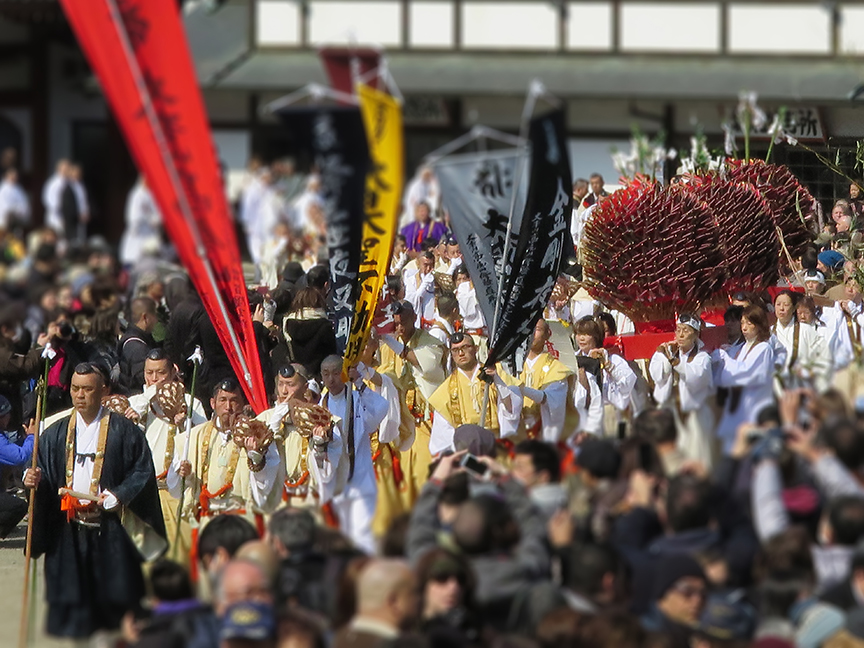

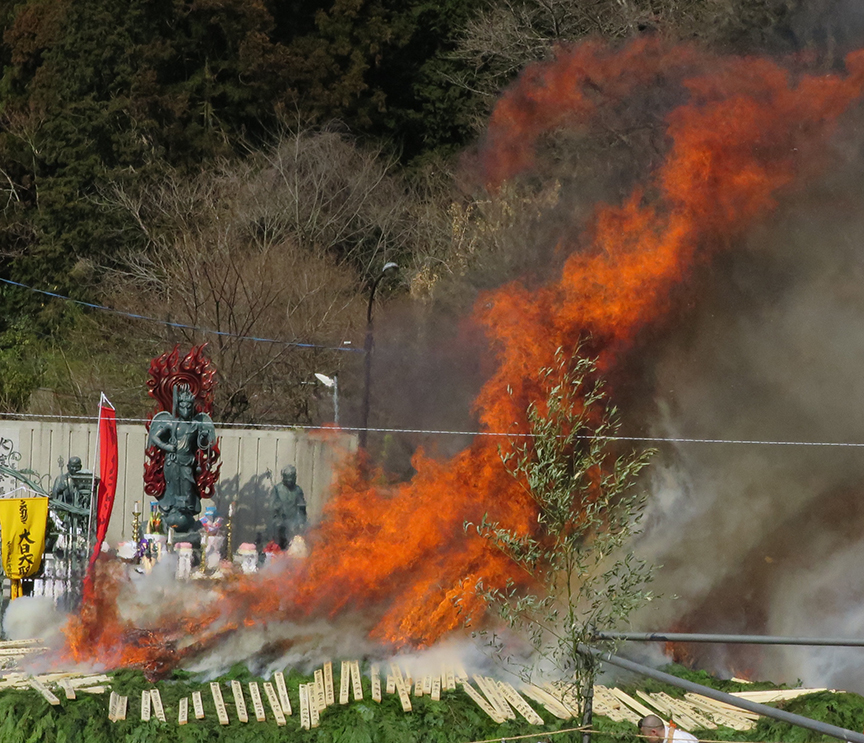
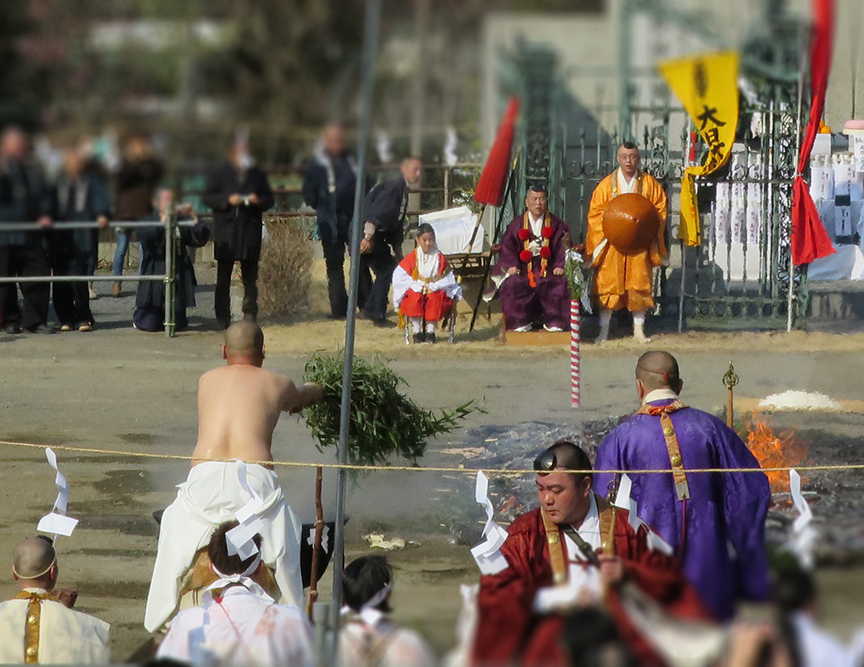
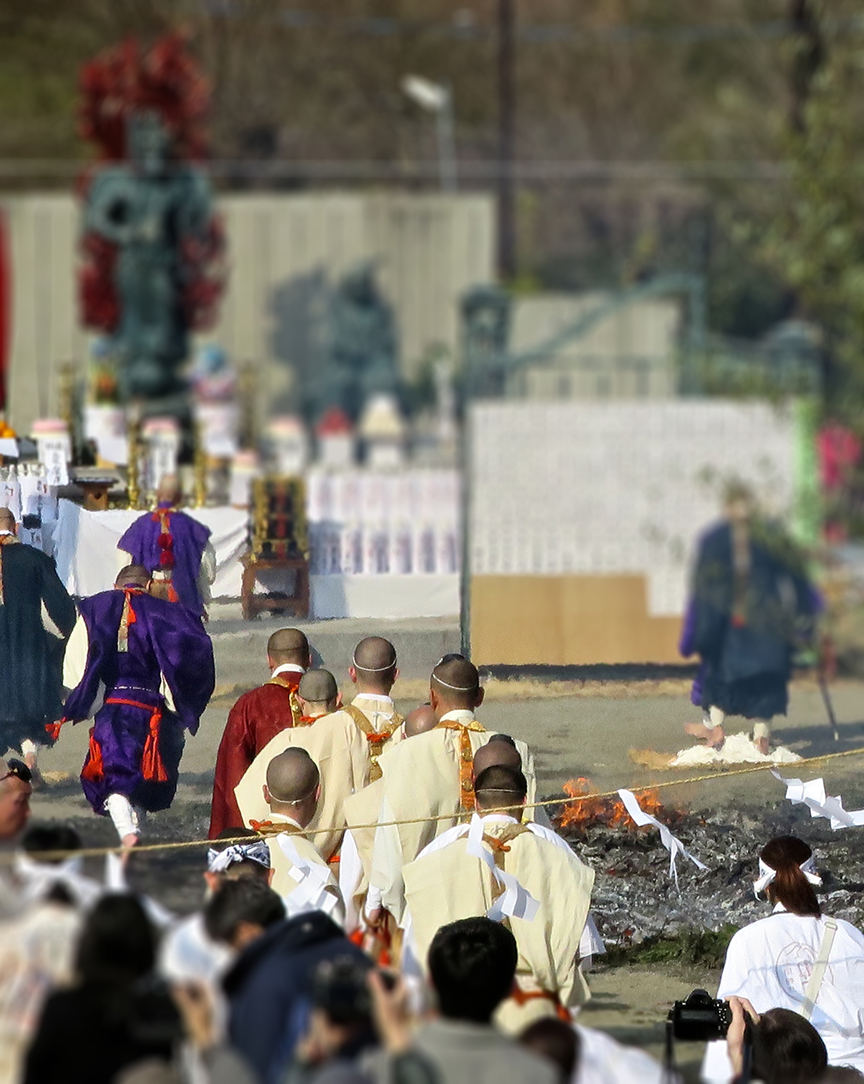
Some practical advice:
• If you want to get a good spot for taking pictures, get there by 10:00 a.m. because by noon (an hour before the ceremony starts) the crowd will already be three-deep.
• The entire thing takes about two hours, and there’s nowhere to sit. High heels are not recommended.
• Check which way the wind is blowing before choosing your spot. Trust me, you do not want to be in the path of the smoke. There is a lot of it once the bonfire gets going, and not only will you not be able to see a damn thing, everything down to your toenails will smell like you just spent a week crouched over a campfire.
• Ordinary people are allowed to walk across the warm ashes after the priests. If you want to do this, you have to get in the (long) line. Take off your shoes and socks before crossing the ashes, then pay your respects in front of the altar at the end before leaving. Bring along a towel to clean off your feet afterwards if you don’t want your socks to be black.
If you’re in Tokyo in mid-March and would like to go to the fire ceremony, more information about the Mt. Takao area is on my website, The Tokyo Guide I Wish I’d Had. For this year’s dates, check the March listing on the Tokyo Cheapo site.
•
⭐️⭐️⭐️⭐️⭐️
The Last Tea Bowl Thief was chosen as an Editor’s Pick for
Best Mystery, Thriller & Suspense on Amazon

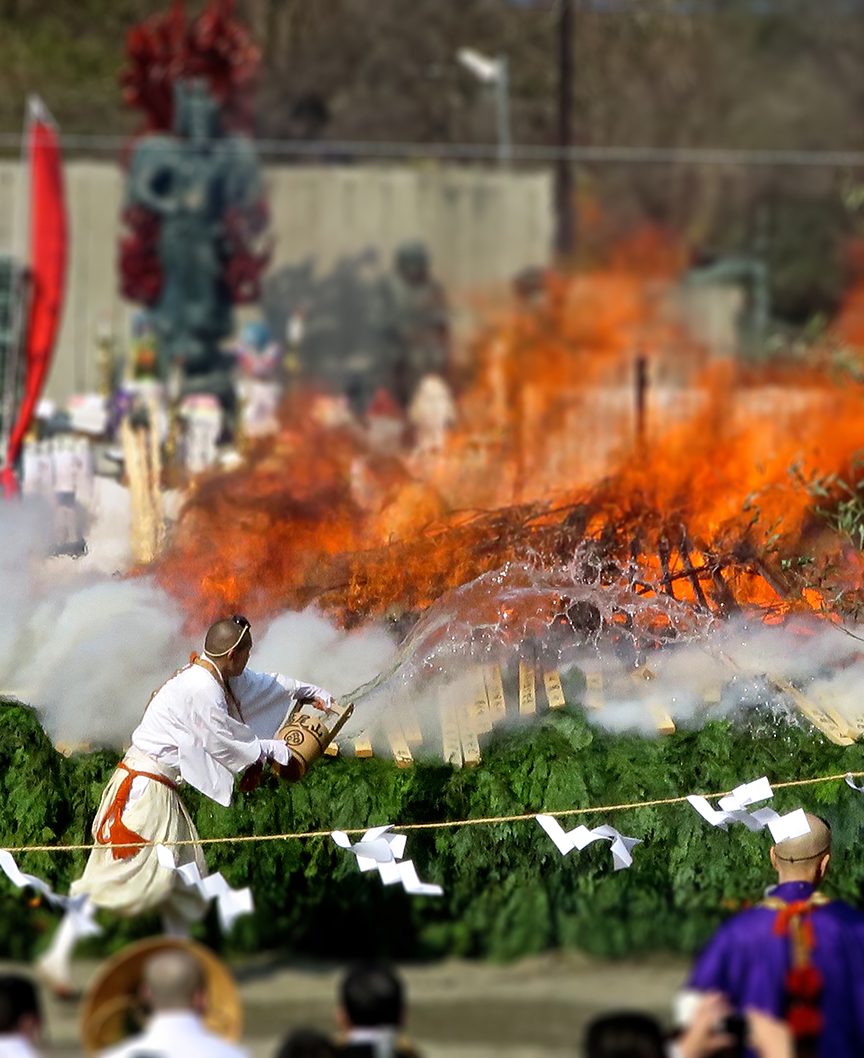

Wonderful photos, Jonelle. I take it you didn’t actually participate in the coal-walking part?
I was going to, but then I saw that the coals weren’t even smoking anymore by the time the general public was allowed to cross, so I decided not to wait in the long long long line just to get my feet dirty. (>_<)
Love the sixth photo! WIsh I had gotten more of those splashing shots! (^-^)
Although of course the shots you DID get were spectacular! ^_^ The fire and water together are wonderful, aren’t they? Next time, I’ll get there earlier and stand in a better place…
Fire, water, earth (in the form of vegetation and the ground of the dojo) and air (made visible by the heat of the fire and the smoke of the earth). It’s an absolutely elemental photo! Apart from a 19th century house fire I can’t imagine many other sights that would offer such complete elemental review. Add to that the sanguine shugenja, the choleric buddhist monks, the melancholic police officers and the phlegmatic audience! You’re going hellenic on the whole scene! (^O^)
Love the cross-cultural/historical/literary connections – indeed, these things have had power in every time and in every place! (Of course, I wouldn’t have noticed them if you hadn’t mentioned this – thanks for opening my eyes!)